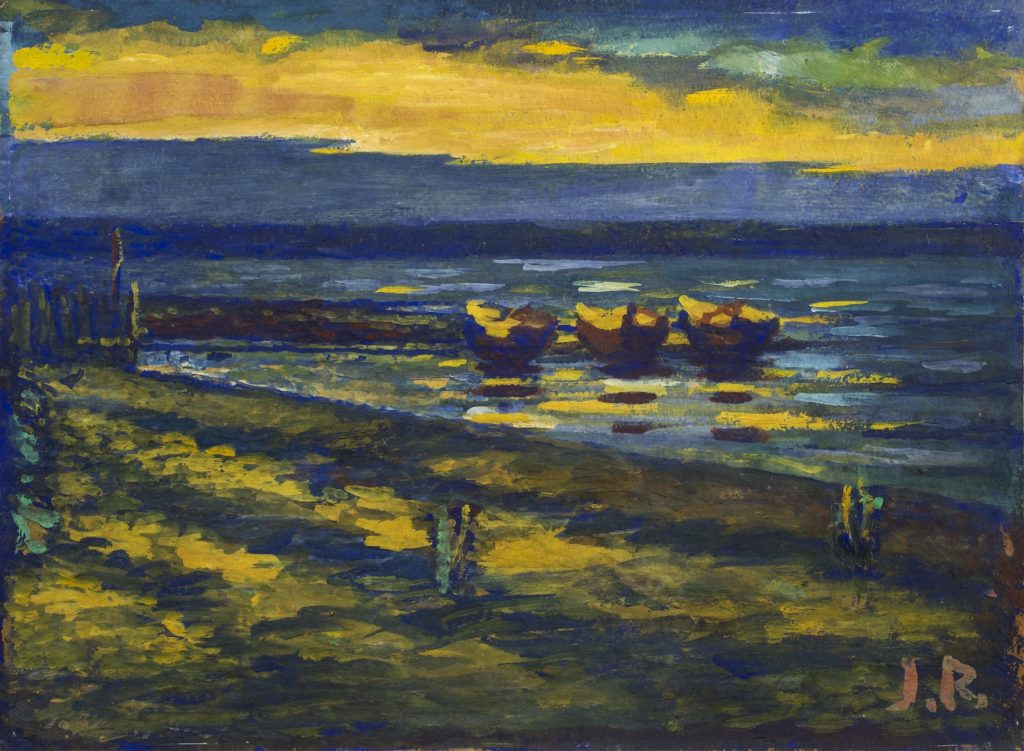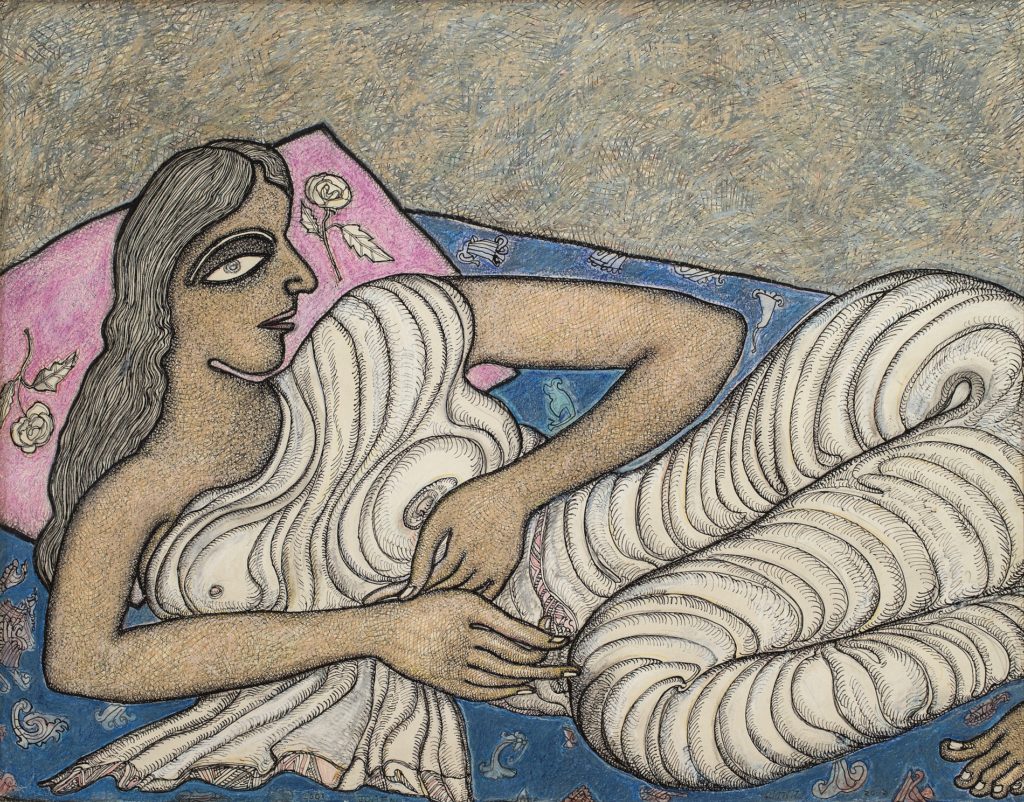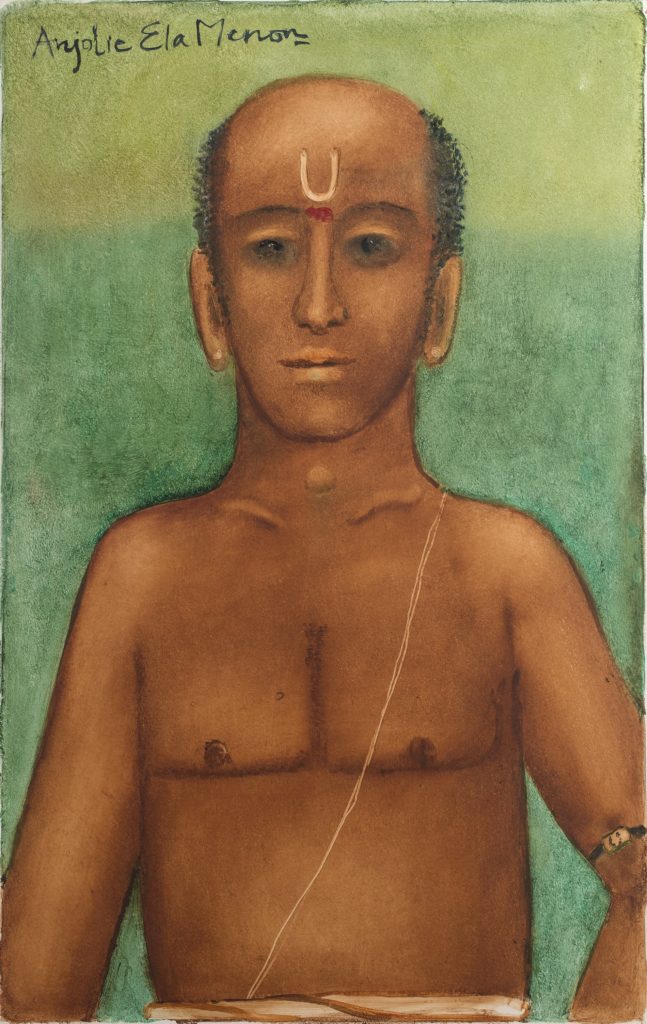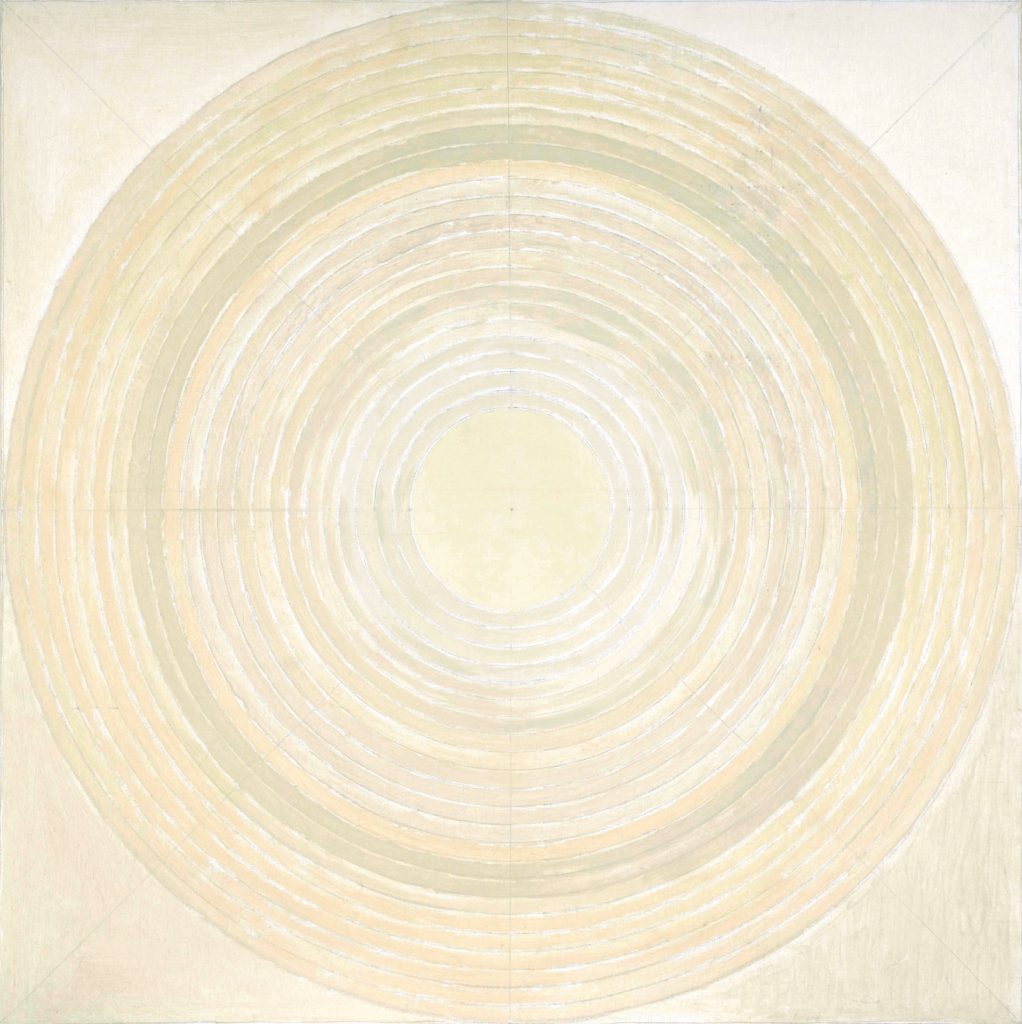“Sakti Burman’s tableaux came to life only because he has organized personal narratives, chance events, archival borrowings, and iconographical references into a coherent pattern for our delectation. He is a storyteller who invigorates our imagination by reminding us that we are not simply made of muscle, nerve, and bone – but that we are also made up fo the words and images, the poems and stories that we inherit from countless previous generations with our genetic code.”
More than the particularity of the stories they hold, Burman’s paintings excites the imagination and fascinates onlooker by giving us a peep into his personal life. His favorite protagonists are his own family, especially his grandchildren who would often be accompanied by figures culled from the artist’s fecund imagination.
Here, plumed birds are set amongst playful children in pointed caps and animated gestures. Harlequin sits on a stuffed chair wearing a colorful costume and a checkered hat. He wears a withdrawn look on his face, lost to the merriment around him.
Embedded in the current narrative are alter egos – Harlequin and Pierrot, the best-known characters from the repertoire of the commedia dell’arte and the pantomime. Presented as opposites, Harlequin and Pierrot can be considered twin aspects of the same personality manifesting against itself. Wearing a somber look on his face that exposes the sadness the colorful costume concealed, Harlequin borrows Pierrot’s melancholic outlook showing a version of Sakti’s multifaceted brand of portraiture – as an artist who participates and witness and as an actor and an observer to his creation.
Text Reference:
Ranjit Hoskote, In the Presence of Another Sky: The Confluential Art of Sakti Burman, Art Musings, Mumbai, 2017, pg. 35
Auction Catalogue – South Asian Art – ‘Modern and Contemporary’ – March 12 -16, 2020








